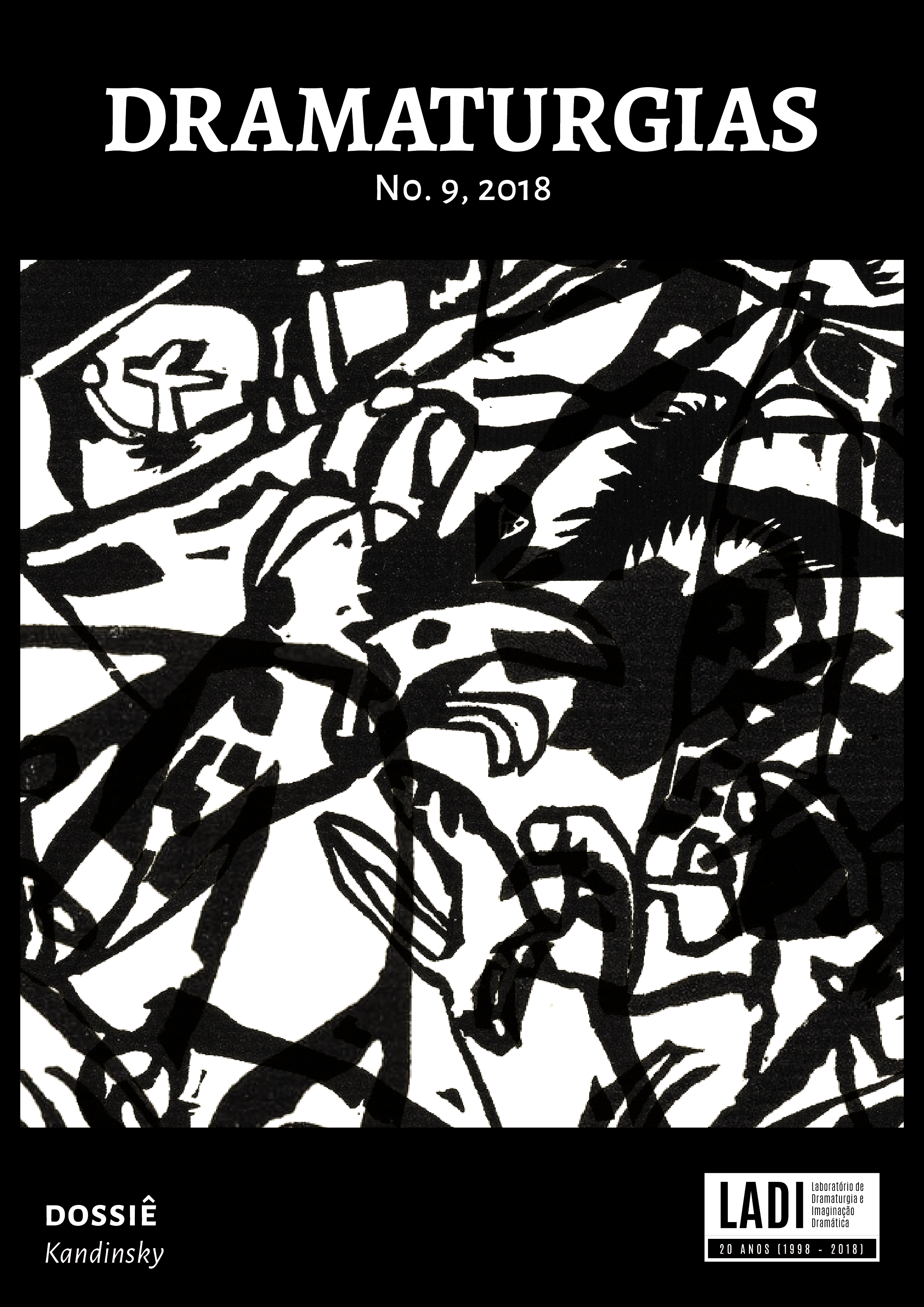W. Kandinsky's Sounds. Translation and Notes.
DOI:
https://doi.org/10.26512/dramaturgias.v0i9.21127Keywords:
Poetry. Music. Sound. Painting. Engraving. Disorientation. Reconversion.Abstract
The small work Sounds (Kláˆnge), dated 1912, is perhaps the most beautiful work written by Kandinsky and illustrated by him. Originally the volume contained thirty-eight prose poems and a vast number of color and black-white engravings. The unique edition was composed of 345 copies. The work was dedicated "To my parents".
It is now impossible to reconstitute this artistic and literary object that was intended to underline the musical quality of texts and engravings as a "synthetic" juxtaposition of both contributions. The certainty, however, that Kandinsky's dazzle reverberates with the sonority of words, often displaced from the first senses and its semantic variations, and also subject to unexpected punctuation, bears witness to a will to experiment what has been done as if poetry had never existed before. Sounds present itself as a singular proposal to transform the world, its agents and respective points of view.
Downloads
References
Downloads
Published
How to Cite
Issue
Section
License
Autores mantém os direitos autorais e concedem à revista o direito de primeira publicação, com o trabalho simultaneamente licenciado sob a Licença Creative Commons Attribution que permite o compartilhamento do trabalho com reconhecimento da autoria e publicação inicial nesta revista.



